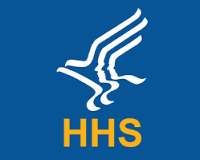Physicians who were notified by letter from a medical examiner that a former patient had died of an...
Physician Prescribing Changed Following Restrictions on Pharmaceutical Detailing
 |
More than a decade ago, medical centers in the United States began instituting policies to limit visits by pharmaceutical representatives promoting medications (a practice also known as “detailing”).
For the study, Ian Larkin, Ph.D., of the University of California, Los Angeles, and colleagues compared changes in the prescribing behavior of physicians at 19 academic medical centers that implemented new detailing policies—before and after the policies went into effect—with changes in the prescribing behavior of a matched control group of physicians not subject to such policies. The researchers focused on eight drug classes: lipid-lowering drugs, gastroesophageal reflux disease drugs, diabetes drugs, antihypertensive drugs, hypnotic drugs approved for the treatment of insomnia (sleep aids), attention-deficit/hyperactivity disorder drugs, antidepressant drugs, and antipsychotic drugs.
Analysis of 16,121,483 prescriptions written between January 2006 and June 2012 by 2,126 attending physicians at the 19 academic medical centers and by 24,593 matched control group physicians revealed that the implementation of academic medical center policies was associated with a mean decrease in market share (share of prescriptions for a given drug within a drug class) of detailed drugs of 1.67 percentage points (95% CI, −2.18 to −1.18 percentage points; p < .001) and an increase in the market share of nondetailed drugs by 0.84 percentage points (95% CI, 0.54 to 1.14 percentage points; p < .001). Detailing policies were associated with statistically significant changes in market share for six of the eight drug classes: lipid-lowering drugs, gastroesophageal reflux disease drugs, antihypertensive drugs, sleep aids, attention-deficit/hyperactivity disorder drugs, and antidepressant drugs.
The magnitude of changes in physician prescribing varied across the 19 academic centers. Of the 19 academic medical centers examined, results were statistically significant for nine academic medical centers for detailed drugs and for eight academic medical centers for nondetailed drugs—a factor the authors noted may have been driven by the fact that academic medical center detailing policies varied widely. Eight of the 11 centers with the more stringent policies saw significant changes in prescribing.
“The study by Larkin et al. suggests that the policies physicians and clinical organizations adopt may influence prescribing, which may reduce patients’ out-of-pocket costs. However, restricting interaction between physicians and the pharmaceutical industry without replacing the education about novel drugs that it offers also has possible risks,” Colette DeJong, B.A., and R. Adams Dudley, M.D., M.B.A., wrote in a related editorial. The pair describes the potential benefits of pharmaceutical detailing before proposing several strategies for addressing conflicts of interest (COIs) related to industry marketing, including the development of an alternative method of drug education.
“It has never been more important for physicians to come together to consider these alternatives, generate evidence about their effectiveness, and move the health care system toward solutions that lower costs for patients and minimize COIs,” they concluded.
For related information, see the Psychiatric News article “What’s in a Label?”
(Image: iStock/smartstock)





